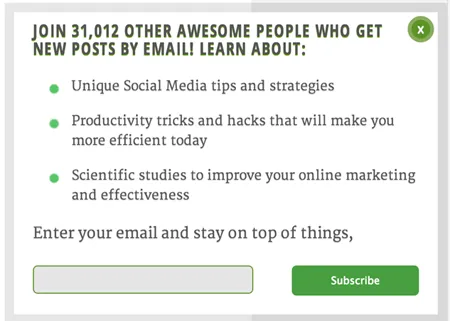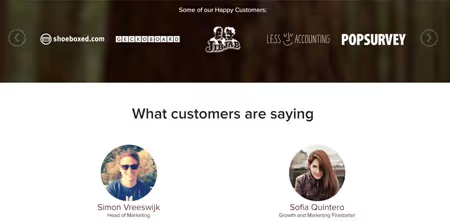Creating a Process for Customer Acquisition – With Sample Experiments
We wrote a post a couple weeks back on building a process for growth experiments. It really focused on the process along with a few experiments you can use across your marketing funnel from acquisition to activation.
The article was so well received that we decided to do a follow up piece solely on customer acquisition experiments.
You can find that original post here and the backlog and experiment templates here.
Experiment 1
Blog Content – Natively Embedded Quiz (Experiment Doc)
In this experiment you are looking to add a native call to action inside your blog content. We do this by using an interactive quiz builder like Typeform or Qzzr. The goal is to increase the total amount of blog subscribers the content will produce without disrupting the readers’ experience.

Experiment 2
Blog Content – Changing Footer CTA to Sliding Up CTA. (Experiment Doc)
This experiment is designed to understand the impact on overall blog content conversion rate when changing the static footer blog subscribe call to action to a sliding blog subscribe call to action.

Experiment 3
Landing Page – Symmetric messaging from adwords to landing page. (Experiment Doc)
This is one of the more interesting experiments you can run on your paid advertising campaigns. The experiment is designed to see the impact symmetric messaging between landing page headers and adwords text has on the landing page conversion rates.

Experiment 4
Pricing Page – Increasing visibility of Customer Testimonials to Position #2 from Position #4. (Experiment Doc)
The pricing page is a crucial area for optimization as it is one of the essential paths in the conversion funnel for your company. This experiment is designed to understand the lift to overall pricing page conversion rate when changing the position of the customer testimonials on the page from 4th to 2nd.

Experiment 5
Paid Twitter Ads – Promote downloadable content to competitors’ twitter followers. (Experiment Doc)
This is an experiment to get involved with the hyper-targeting and custom audience features of the social network advertising platforms. The goal of the experiment is to understand the effect of hyper-targeted twitter ad promotion on our downloadable resource landing page conversion rates.

TL;DR
These are just a few samples of the countless experiments you can start to run for your customer acquisition campaigns. The takeaway here is that you need to create a process for thinking through your customer acquisition efforts.
By building a repository of past growth experiments you can gradually refine your approach in future initiatives and uncover new opportunities for growth.
Image courtesy of bplanet/freedigitalphotos.net
